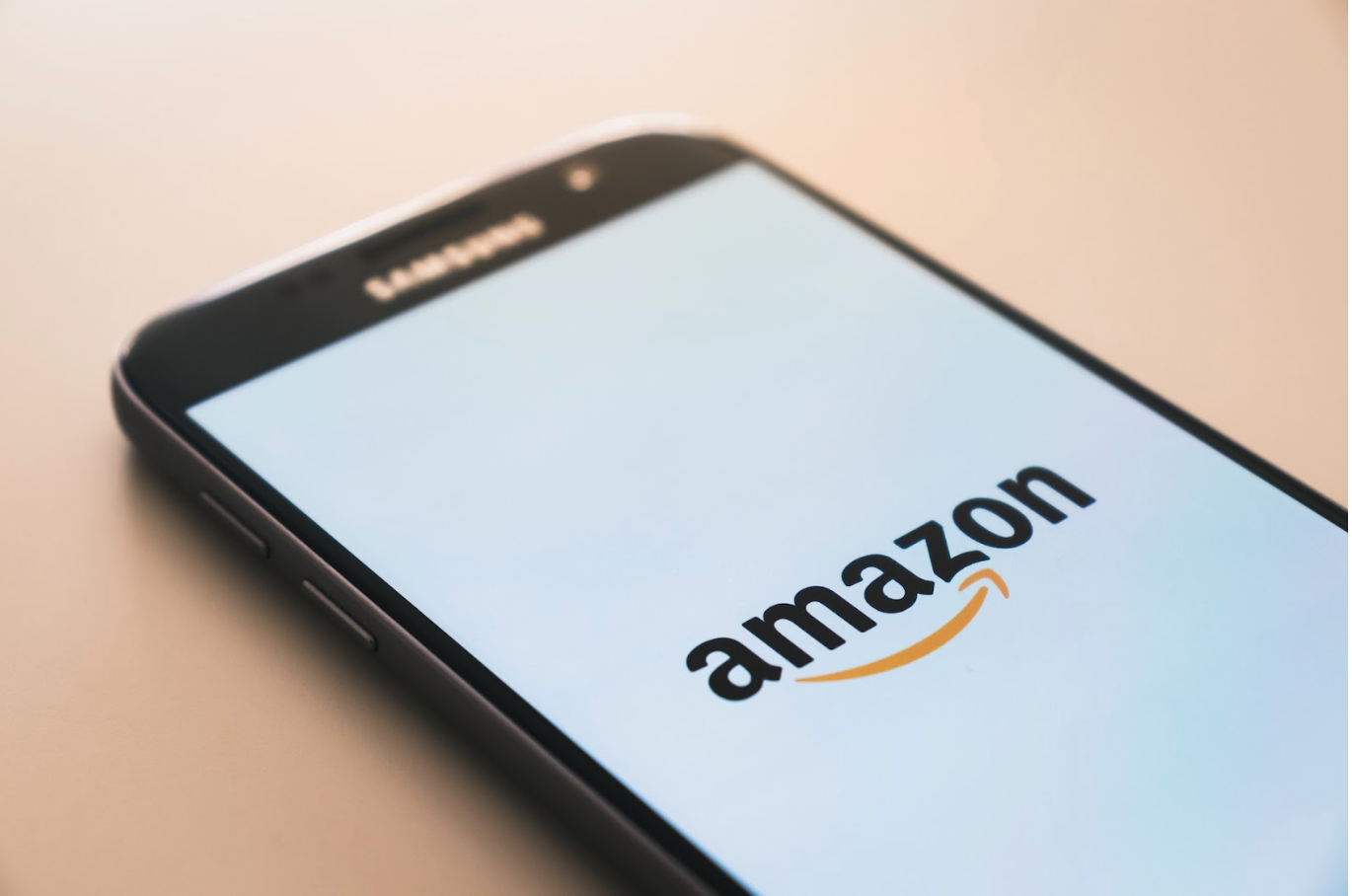Written by Colby Hopkins
Ranking fifth in the world in terms of market cap with a staggering $1.045 trillion (CompaniesMarketCap, 2023), Amazon has been able to cement itself as a global giant that has altered how we shop and live. Expanding beyond just delivering goods, it is also a media streaming service and manufactures other technologies such as “Alexa”. Amazon has quickly become one of the most recognizable company names throughout the world. It has achieved such success that it has become commonly used as a verb in everyday language, much like “Google.” However, like many other large corporations today such as Google and Facebook, Amazon started out as a small business building its way up to being a large corporation. Within this article, we’ll explore Amazon’s company history and its rags-to-riches story.
The Beginning of Amazon
On July 5, 1994, Amazon was officially founded under the name “Cadabra” (as in abracadabra) by young Princeton graduate Jeff Bezos within a garage space in his rental home in Bellevue, Washington. However, after just a few months, Bezos switched the name to Amazon Inc because of Cadabra’s unappealing similarity to the word “cadaver” (A&E Television Networks, 2015). Roughly a year later, the Amazon website was officially published as an online bookseller delivering to all 50 US states and 45 countries from that same garage space.
Like many other companies in their first couple of years of production, Amazon saw losses. However, one of the most significant signs that the company was on the path to success came in the transition of quarter three (July 1st – September 30th) to quarter four (October 1st – December 31st) in 1996. Within that time span, Amazon’s revenues rose from $4.2 million to $8.5 million while seeing a $100,000 decrease in losses from each quarter (Wilhelm, 2019). Although they were still seeing roughly $2.2 million in total losses during this quarter, this was a positive sign as they were able to more than double their revenue while decreasing those losses.
After extending beyond books in 1998, the first time Amazon was able to cross into black numbers territory and make a profit was seen in the last quarter of 2001 after a busy Christmas shopping season (ABC News, n.d). From there, 2003 became Amazon’s first profitable year, as the company saw net profits grow from $3 million in the last quarter of 2002 to $73 million in the last quarter of 2003 (Hansell, 2004). This led to them earning $35 million for all of 2003, which was up from losing $149 million in the previous year. Overall, Amazon’s journey from a small online bookseller to one of the global giants today saw its ups and downs in the beginning, but their commitment to innovation led them to be one of the most successful companies in the world today.
The Launch of Amazon Prime
One of Amazon’s most recognizable and profitable services was first introduced in February 2005 known as “Amazon Prime”. Debuting as an unlimited two-day delivery subscription at $79 a year, Amazon Prime started with relatively limited consumer attraction due to the concept of online shopping being somewhat new and subscription prices still being too expensive to some. However, after a couple of years of expansion of the service and subtle changes such as the introduction of the Prime Video portion of the subscription, Amazon started to see substantial growth with their subscription service in the 2010s.
According to data provided by Search Logistics, Amazon has seen an increase of roughly $29 billion in net sales from 2013 to 2021, with 2021 seeing a total of $31.77 billion in net sales of Amazon Prime. Additionally, “Amazon subscription value has more than doubled since 2017” (Search Logistics, 2022). This was in large part due to an increase of approximately 28 million subscribers from the years 2019-2021, as COVID-19 was at its worst. Based on the current trajectory of the previous years, Search Logistics also predicts that there will be an estimated total of 168.3 million subscribers by the year 2025.
Not only have the sales of the subscription helped increase profits, but the amount of purchases being made by those prime members has also helped contribute to Amazon’s success. Based on the speed of the operation and the convenience of free delivery, Amazon has been able to generate a lot more per year from Prime members’ purchases in comparison to non-prime members. Based on a 2021 survey, a Prime member’s average spending rate was $1,400 per year through Amazon, while non-members only spent roughly $600 yearly (Chang, 2021). The implementation of Prime as a subscription service didn’t have the immediate impacts that Bezos and the rest of the Amazon employees desired; however, through more recent expansion tactics as well as the idea of online shopping becoming more of the norm, Amazon Prime has been a huge success and has played an essential role in the expansion of the company.
The Future of Amazon
With all the success that Amazon has already achieved and their desire to continuously expand into different industries, the only question left is: What’s next for Amazon? Being most known for their delivery services, the most notable expansion Amazon is trying to accomplish is to facilitate their delivery process. While Amazon already offers a relatively short delivery time, depending on one’s location, they’re continuously trying to improve delivery time as technology advances over time. This includes their newest expansion of a trial delivery system with drones in Lockeford, California: Amazon Prime Air. Within this experimental program, air drones will be able to deliver to local communities within a small radius of the Amazon facility within just a couple of hours (Amazon Staff, 2022). In addition to this newly innovative project, Amazon has also looked into a fully electric and autonomous delivery system known as Amazon Scout (Patrao, 2022). Whether either of these programs will be the “next big thing” still remains unclear; however, it’s evident that Amazon will continue experimenting with different technologies in order to facilitate their delivery systems.
In addition to expanding their delivery systems, Amazon is also pursuing expansion opportunities by forming partnerships and acquiring other companies. Although Amazon has developed different partnerships with several different renowned companies such as Kohl’s and Best Buy, a new partnership with Grubhub could lead to their domination of another delivery service: food and groceries. Although this new partnership still hasn’t provided definite growth for both companies just yet, with them being two of the largest companies in their own respective industries, the partnership between Amazon and Grubhub has the potential to alter the entire food and grocery delivery industry. While Amazon’s partnership with Grubhub was big news for the company, Amazon has also been actively expanding through acquisitions as well. For example, the famous media making company, MGM (Metro-Goldwyn-Mayer) studios was recently bought out by Amazon for $8.5 billion, which is known for the “Rocky” films, “Rain Man”, and more (Maas, 2022). With its recent acquisition of MGM, Amazon plans to produce TV and movie projects based on popular MGM franchises, including “Legally Blonde” and “Robocop” (PYMNTS, 2023). Although no one knows what lies ahead in the future, it’s clear that Amazon wants to continue to grow as a corporation through their experimentation in a more advanced delivery system and strategic business partnerships and acquisitions.
Works Cited
ABC News, ABC News Network, https://abcnews.go.com/Business/story?id=87393&page=1.
“Amazon Net Sales 1996-2022.” Marketplace Pulse,
https://www.marketplacepulse.com/stats/amazon-net-sales.
“Amazon Opens for Business.” History.com, A&E Television Networks, 4 Nov. 2015,
https://www.history.com/this-day-in-history/amazon-opens-for-business.
“Amazon Prime Statistics: Subscribers, Usage & Revenue 2023.” SearchLogistics, 5 Apr. 2023, https://www.searchlogistics.com/learn/statistics/amazon-prime-statistics/#:~:text=Amaz.
Chang, David. “The Average Amazon Prime Member Spends This Much per Year.” The Motley
Fool, The Ascent by The Motley Fool, 12 July 2022,
“Companies Ranked by Market Cap.” CompaniesMarketCap.com – Companies Ranked by Market
Capitalization, https://companiesmarketcap.com/.
Envision Horizons. “When Did Amazon Prime Start?” Envision Horizons, 27 June 2022,
https://www.envisionhorizons.com/when-did-amazon-prime-start#:~:text=Amazon%20
Prime%20started%20off%20slow,features%20and%20benefits%20to%20Prime.
Hansell, Saul. “Amazon Reports First Full-Year Profit.” The New York Times, The New York Times,
Jason Patrao, Director. “Amazon Is Working with Communities to Build the Future of Scout.” US
About Amazon, US About Amazon, 1 June 2022,
Maas, Jennifer. “Amazon Closes $8.5 Billion Acquisition of MGM.” Variety, Variety, 19 Mar. 2022,
https://variety.com/2022/tv/news/amazon-mgm-merger-close-1235207852/.
PYMNTS.com. “Amazon Eyes TV, Movie Projects for MGM Titles like ‘Legally Blonde’ and
‘Robocop’.” Amazon Eyes TV, Movie Projects for MGM Titles | PYMNTS.com,
PYMNTS.com, 16 Apr. 2023, https://www.pymnts.com/amazon/2023/amazon-looking-to-turn-mgm-properties-into-movies-and-tv-series/.
Staff, Amazon. “Amazon Prime Air Prepares for Drone Deliveries.” US About Amazon, US About
Amazon, 13 June 2022, https://www.aboutamazon.com/news/transportation/amazon-prime-air-prepares-for-drone-deliveries.
Wiediger, Christian. “Photo by Christian Wiediger on Unsplash.” Beautiful Free Images &
Pictures, 11 Apr. 2018, https://unsplash.com/photos/rymh7EZPqRs.
Wilhelm, Alex. “Why Amazon’s History of IPO-Era Losses Means Little for Today’s Unprofitable
Unicorns.” Crunchbase News, 14 May 2019,


